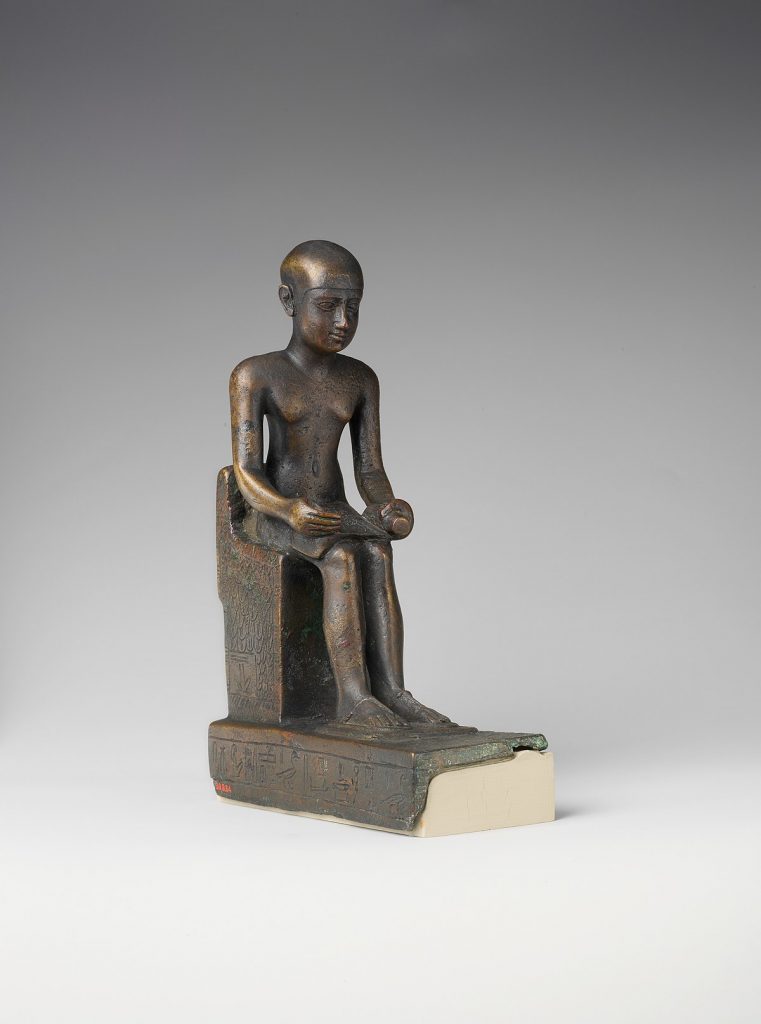
When we speak of great civil engineers who transformed human civilization, the conversation should begin thousands of years ago with a single name: Imhotep. Born in ancient Egypt around 2650 BCE, Imhotep is regarded as the world’s first recorded engineer, architect, and polymath. He was more than just a builder—his vision shaped how societies used engineering to demonstrate power, culture, and influence. His greatest achievement, the Step Pyramid of Djoser laid the foundation for future monumental construction projects such as the Great Pyramid of Egypt.
Early Life and Rise to Power
Imhotep was born during Egypt’s Third Dynasty, likely near Memphis, the capital of ancient Egypt at the time. His name translates to “He who comes in peace.” Although details of his family are scarce, documents highlight that he came from a relatively modest background. He ascended to become one of the most influential figures in Egyptian history.
He served under Pharaoh Djoser as chancellor, high priest of Heliopolis, physician, scribe, and—most famously—chief architect. This unique combination of administrative, religious, and technical roles gave him a broad understanding of Egyptian society and its ambitions. Unlike many figures of antiquity whose legacies were tied only to royal decree, Imhotep’s fame grew because of his extraordinary intellect and his ability to translate ideas into tangible achievements.
The Step Pyramid of Djoser
Imhotep’s crowning achievement is undoubtedly the Step Pyramid at Saqqara, widely considered the first monumental stone building in the world. Before Imhotep, Egyptian tombs for kings, known as mastabas, were rectangular mud-brick structures with flat roofs. Imhotep envisioned something radically different: stacking mastabas of diminishing size to create a towering, stepped structure.
The Step Pyramid, rising to 62 meters (203 feet), was revolutionary not only in scale but also in materials and methods. It marked the transition from mud-brick to stone construction, showcasing the durability and grandeur of limestone as a building material. The pyramid complex included courtyards, temples, chapels, and ceremonial spaces, forming an early prototype of the vast mortuary complexes that would later culminate in the Great Pyramids of Giza.
Imhotep’s design reflected both practical engineering and deep cultural symbolism. The pyramid’s upward-reaching form was thought to help the pharaoh ascend to the heavens and join the gods. This fusion of structural innovation with spiritual meaning set the standard for Egyptian monumental architecture for centuries. This a concept that reached its zenith with the Great Pyramid of Giza. It must be said that the pyramid was not a tomb, as the consensus seems to believe.
Innovations and Engineering Legacy
Imhotep’s brilliance went far beyond aesthetics. He introduced stone-cutting and masonry techniques that fundamentally changed Egyptian construction. His mastery of stress distribution, weight-bearing walls, and large-scale project coordination were unprecedented. By establishing stone as the material of choice for monumental architecture, Imhotep ensured Egypt’s legacy would endure for millennia.
The Step Pyramid also pioneered the concept of building integrated complexes, where architectural, ceremonial, and social functions converged. It became a blueprint for the temples, pyramids, and urban planning of subsequent dynasties.
Imhotep the Polymath
Though remembered primarily as an engineer and architect, Imhotep was also a physician, astronomer, and philosopher. Ancient Egyptian texts describe him as a healer with profound knowledge of anatomy and medicine. He is credited with authoring medical treatises centuries before Hippocrates, making him a father of medicine as well as engineering.
Imhotep’s multifaceted genius reflects the close relationship between science, engineering, and spirituality in ancient societies. To Egyptians, he was not merely a builder but a sage who bridged the earthly and the divine through knowledge.
Deification and Enduring Influence
Few engineers in history achieved the posthumous honor Imhotep received. Around 2000 BCE, he was deified as a god of wisdom, healing, and learning. Temples were dedicated to him, and worshippers sought his aid in curing illnesses. Over time, his image merged with Greek traditions, influencing the figure of Asclepius, the Greek god of medicine. It is also
Imhotep’s influence stretched far beyond Egypt. His Step Pyramid became a symbol of civilization’s progress, inspiring architectural innovation across the ancient world. Modern engineers and architects still study his methods, not only for their technical ingenuity but for their ability to combine practicality with cultural meaning.
Why Imhotep Still Matters
In many ways, Imhotep represents the birth of civil engineering as a profession. His life shows how technical mastery can transform societies, enabling them to express cultural identity, consolidate power, and achieve lasting legacies. Every skyscraper, dam, or bridge built today carries an echo of Imhotep’s pioneering spirit—the idea that structures can serve both practical needs and higher aspirations.
For civil engineers, Imhotep is not just a historical figure but a reminder of the timeless role of engineering: to solve problems, inspire wonder, and build a future that outlives us all.
- Subscribe to Our Newsletter: Stay updated with the latest insights, tips, and innovations in civil engineering.
- Check Out These Must-Read Resources:
- A comprehensive book on civil engineering to enhance your understanding of structural design and construction techniques.
- A captivating book about the lives of great civil engineers, showcasing the pioneers who shaped the modern world.
- A practical project inspection checklist—an essential tool for every engineer involved in site supervision and quality control.
- Dive into the genius of the Renaissance with our recommended book about Leonardo da Vinci, exploring his contributions to engineering and architecture.
- Don’t miss our field notebook and journal, designed specifically for civil engineers and architects to document projects, ideas, and on-site observations
No responses yet